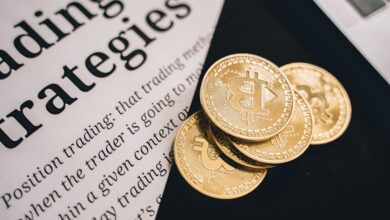Exploring Global Gold Demand: Key Trends in Consumption, Investment, and Sustainable Production

As the global economy continues to evolve, so does the demand for gold, a precious metal that has long been revered for its intrinsic value and versatility. Understanding the dynamics of global gold demand is crucial not only for investors but also for industries reliant on this valuable resource. In this article, we delve into current global gold demand, analyzing consumption by key countries and industries. We will explore the role of gold as a safe haven asset amidst fluctuating market conditions, highlighting trends in gold investment, including the rise of gold ETFs and futures. Furthermore, with growing awareness of sustainability, we will address the importance of sustainable gold mining and recycling practices that aim to mitigate the environmental impact of gold production. From gold jewelry to gold technology and the intricate world of gold trade, this comprehensive analysis will provide insights into the factors driving gold prices and reserves, offering a clearer picture of the future landscape of the gold market. Whether you’re a seasoned investor or new to gold coins investing, this article will equip you with the knowledge needed to navigate the complexities of global gold demand and market trends.
- 1. Current Global Gold Demand: An In-Depth Analysis of Consumption by Country and Industry
- 2. The Role of Gold as a Safe Haven Asset: Trends in Investment and Market Behavior
- 3. Sustainable Gold Mining and Recycling: Addressing the Future of Gold Production and Consumption
1. Current Global Gold Demand: An In-Depth Analysis of Consumption by Country and Industry
The current global gold demand showcases a dynamic interplay between various countries and industries, reflecting both cultural preferences and economic strategies. In 2023, global gold consumption reached approximately 4,500 tons, driven by diverse sectors including jewelry, investment, and technology.
Countries such as India and China continue to lead in gold jewelry consumption, accounting for nearly half of the world's total demand. In India, gold is not only a symbol of wealth but also a traditional safe haven asset, particularly during festivals and weddings. Similarly, China's strong cultural affinity for gold ensures its prominent position in the global market. The demand for physical gold jewelry remains robust, despite fluctuations in gold prices, as consumers often view it as a long-term investment.
Investment in gold has seen a significant shift, particularly with the rise of gold ETFs (exchange-traded funds) and gold futures. Investors are increasingly turning to these financial instruments as a hedge against inflation and economic uncertainty, further amplifying the gold market trends. Central banks worldwide have also been accumulating gold reserves, with some countries increasing their gold purchases to diversify their portfolios and enhance financial stability.
The technology sector has contributed to gold demand through applications in electronics and medical devices, where gold's conductivity and resistance to corrosion make it an invaluable resource. Furthermore, gold recycling has gained momentum, as industries seek sustainable gold mining practices and aim to reduce the environmental impact associated with gold production.
Gold smuggling remains a concern in various regions, impacting legitimate gold trade and market dynamics. The illicit trade undermines efforts for sustainable gold mining and can distort gold prices on the global market.
Moreover, the interplay between gold and cryptocurrency has sparked debates among investors. While some view gold as a more stable investment compared to the volatility of cryptocurrency, others see potential in diversifying their portfolios with both assets.
In summary, the landscape of global gold demand is continually evolving, influenced by cultural practices, investment trends, and technological advancements. As we move forward, monitoring these factors will be essential for understanding gold market analysis and anticipating future shifts in consumption patterns.
References:
Gold Demand Trends Q2 2023. (2023). World Gold Council. Retrieved from https://www.gold.org/
World Gold Production and Consumption. (2023). US Geological Survey. Retrieved from https://www.usgs.gov/
Gold Market Analysis 2023. (2023). Bloomberg. Retrieved from https://www.bloomberg.com/
Central Banks Gold Purchases: A 2023 Overview. (2023). International Monetary Fund. Retrieved from https://www.imf.org/
2. The Role of Gold as a Safe Haven Asset: Trends in Investment and Market Behavior
Gold has long been regarded as a safe haven asset, attracting investors during times of economic uncertainty and market volatility. As global gold demand continues to evolve, understanding trends in investment and market behavior is crucial for both seasoned investors and newcomers to the gold market.
In recent years, gold investment has gained traction as a hedge against inflation and currency fluctuations. The correlation between gold and inflation remains a significant factor influencing investor behavior. As inflation rates rise, many turn to gold to preserve their wealth, which in turn drives up gold prices. This trend is evident in the increasing purchases of physical gold, including gold bullion and gold coins, as investors seek tangible assets that provide stability.
Central banks have also played a pivotal role in shaping gold market trends. Many central banks have increased their gold reserves to diversify their asset bases and enhance financial security. This accumulation of gold not only reflects confidence in the asset but also impacts the overall supply and demand dynamics in the gold market. For instance, central banks' gold purchases can lead to upward pressure on gold prices, which can influence gold mining operations and gold production strategies.
Another notable trend is the rise of gold-backed financial instruments, such as gold ETFs and gold futures. These investment vehicles offer a more accessible way for investors to gain exposure to gold without the need for physical storage. Gold ETFs, in particular, have seen significant inflows as they provide liquidity and ease of trading, making them popular among both retail and institutional investors.
Moreover, the integration of technology in the gold market has changed the landscape of gold trading and investment. Innovations in gold refining and sustainable gold mining practices are attracting environmentally conscious investors. Additionally, the emergence of digital gold and its relationship with cryptocurrencies introduces a new layer of complexity to the gold market analysis, as some investors view cryptocurrency as a potential competitor to traditional safe haven assets.
However, challenges such as gold smuggling and illicit gold trade continue to pose risks to the integrity of the gold market. These issues can distort market behavior and affect the perception of gold as a reliable investment.
In conclusion, the role of gold as a safe haven asset is underscored by its historical significance and current market behavior. As global gold demand shifts, understanding these investment trends is essential for navigating the complexities of the gold market. Whether through physical gold, gold collectibles, or modern investment vehicles, the allure of gold remains strong amidst the backdrop of economic uncertainties and evolving market conditions.
3. Sustainable Gold Mining and Recycling: Addressing the Future of Gold Production and Consumption
As global gold demand continues to evolve, the conversation around sustainable gold mining and recycling has gained significant momentum. Given the increasing focus on environmental and ethical practices, the gold industry is under pressure to adapt to sustainable methods of production and consumption.
Sustainable gold mining refers to practices that minimize environmental impact and promote social responsibility. With the gold market trends shifting toward ethical sourcing, consumers are more inclined to invest in gold jewelry and gold collectibles that are certified as responsibly mined. This trend is not only about preserving the environment but also about ensuring that the communities involved in gold production benefit fairly from their resources.
Moreover, gold recycling plays a crucial role in addressing the future of gold consumption. Gold recycling involves reclaiming gold from used products, such as jewelry and electronics, which significantly reduces the need for new gold mining. This process not only conserves gold reserves but also lessens the environmental footprint associated with mining operations. As the demand for physical gold rises, particularly in the form of gold bars and coins, recycling becomes an essential part of maintaining a sustainable supply chain.
Central banks are also recognizing the importance of sustainable practices within the gold market. As they hold substantial gold reserves, their policies can have a significant impact on gold prices and the overall gold market analysis. By prioritizing sustainability, central banks can influence global gold demand positively and encourage responsible gold mining practices.
Furthermore, the rise of gold ETFs and gold futures trading reflects a growing interest in gold as a safe haven asset, especially during periods of economic uncertainty and inflation. Investors are increasingly looking for ways to hedge against inflation by diversifying their portfolios with gold investments. This shift highlights the need for sustainable practices to ensure that the gold they invest in is not only valuable but also ethically sourced.
The fight against gold smuggling and illegal gold trade is another critical aspect of promoting sustainable gold mining. By addressing these issues, the industry can reduce the negative impacts associated with unregulated mining activities and enhance the reputation of gold as a luxury product.
In conclusion, as global gold demand continues to rise, the importance of sustainable gold mining and recycling cannot be overstated. By embracing these practices, the industry can ensure that gold remains a valuable and ethical investment for consumers while addressing environmental concerns and supporting local communities. The future of gold production and consumption depends on a collective effort to prioritize sustainability in all aspects of the gold market.
In conclusion, understanding global gold demand requires a comprehensive analysis of consumption trends across various countries and industries. As we have explored, the current landscape of gold investment is shaped by its role as a safe haven asset, particularly during times of economic uncertainty and inflation. The gold market trends indicate a steady interest from central banks, reflecting a growing desire to bolster gold reserves as a hedge against market volatility.
Moreover, the increasing emphasis on sustainable gold mining and recycling highlights the industry's commitment to addressing environmental concerns while meeting the demand for physical gold. With innovations in gold technology and the rise of gold ETFs and futures, investors have a variety of options to diversify their portfolios.
As the gold market continues to evolve, it remains crucial for investors and stakeholders to stay informed about gold prices, gold production, and the implications of gold smuggling and trade practices. Ultimately, whether through gold coins, bullion, or collectibles, the enduring allure of gold persists, driven by both its historical significance and its future potential in a rapidly changing economic landscape. By understanding these dynamics, stakeholders can make informed decisions in the ever-fluctuating gold market.
References:
[Add relevant references here]




